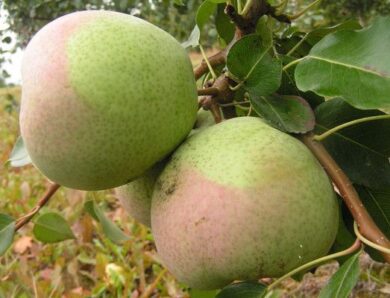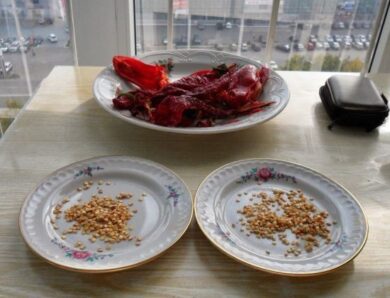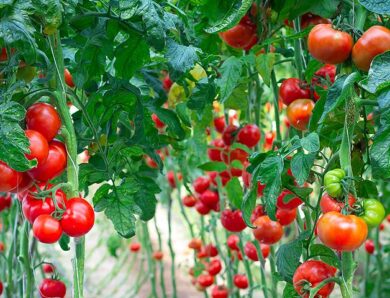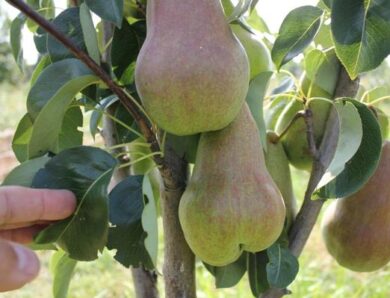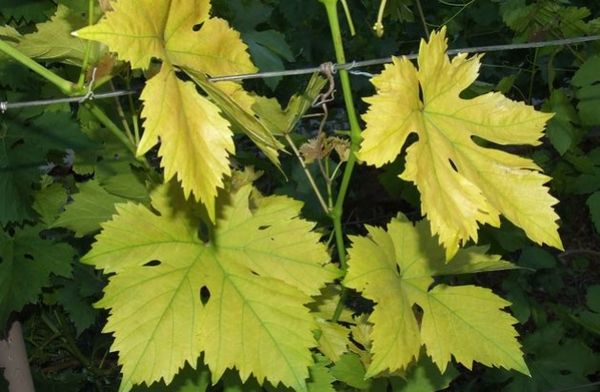
Yellow grape leaves: how to find the cause and what to do with the bush
The prospect of planting a full-fledged vineyard on your site pleases many novice gardeners. However, a lot of effort is needed, and mistakes, allowed in care, may contribute to the development of a disease. Example, yellow spots on grape leaves - one of the signs of the disease. Learn to identify the symptoms of diseases or pests, and it will be much easier to treat.
How to determine the cause
Understand, why the leaves turn yellow, it is possible, only after assessing all possible factors, can be detrimental to the bush. Very often spots and drying of leaves - the result of illiterate care for the vineyard in summer. In any case, if your plant has dramatically changed the color of the leaf blade, should be identified as soon as possible, which caused a similar problem.

Among the most common causes of yellow leaves on the bushes may be:
- damage to the root system of the bush. Most often it is the fault of small rodents. That is, the plant is deficient in nutrients, which are best absorbed by them through the soil. Due to this, the leaves may turn yellow and dry;
- insects. Yellowed leaves on grapes are often the result of the formation of entire colonies of pests. Small sucking parasites are invisible to the naked eye. That is why they can cause serious damage to the plant before, than you will understand, that it needs to be sprayed. Hence the spots on the leaf blades;
- viruses. Bacterial and fungal diseases can destroy your vines. Usually, it all starts with a change in color in the leaves, as well as the berries of the plant.
Understand, why yellow grape leaves, a beginner will also be able to. The main thing, to carry out competent care of bushes and to inspect them regularly. It is recommended to treat visible mechanical damage, remove all unnecessary shoots and leaves in a timely manner. In addition, this list of causes of yellowing on the leaf blade of grapes does not end there.
Lack of fertilizers
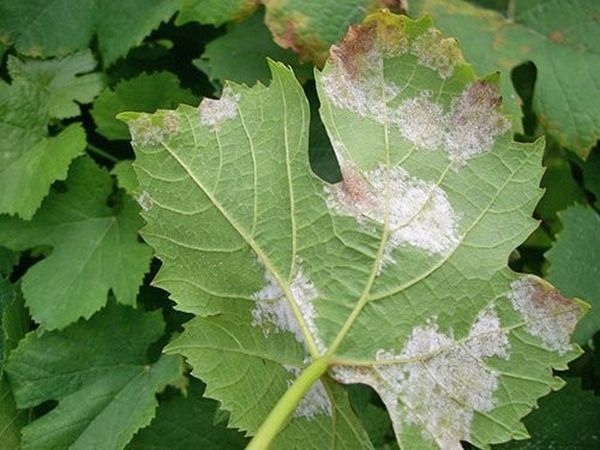
The reason for that, why the leaves turn yellow and fall off, sometimes lies in improper fertilization or complete lack thereof. If you neglected top dressing, and too little nitrogen is present in the substrate, this will soon affect the condition of the grape leaves. It acquires a lemon hue, twists, dries up and falls off very easily. It is simply necessary to fill the lack of nitrogen in the soil. If you do not want to buy store chemicals, add chicken manure or manure to the soil.
Chlorosis
Why yellow grape leaves, it is difficult to determine on the fly. One of the causes of chlorosis is a violation of vital for the process of photosynthesis of the plant. This is what happens in that case, if the leaf blade of the bush chlorophyll is produced in small quantities. In addition, contributes to the development of this problem and too low iron content in the leaves of grapes.
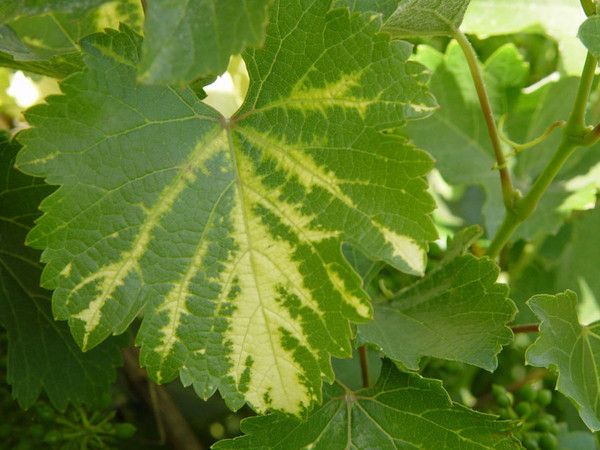
Infectious
What shall I do, if the grape leaves lighten noticeably? Infectious chlorosis can be the reason. In general, the essence of this disease lies in the lack of iron in the leaf blade of the bush (this element is a mediator in the formation of chlorophyll). Yellowish tint of the leaves is one of the first symptoms of the disease.
Unfortunately, handle the yellow leaves of the bush in that case, if he has suffered from infectious chlorosis, senseless. The only thing, which you can do, - uproot shrubs as soon as possible, and the soil composition is disinfected and cleaned of nematodes, which will further spread the disease. Even if you have lost a really valuable and very rare variety, reproduce it, trying to defeat the disease, strictly prohibited.
Non-infectious
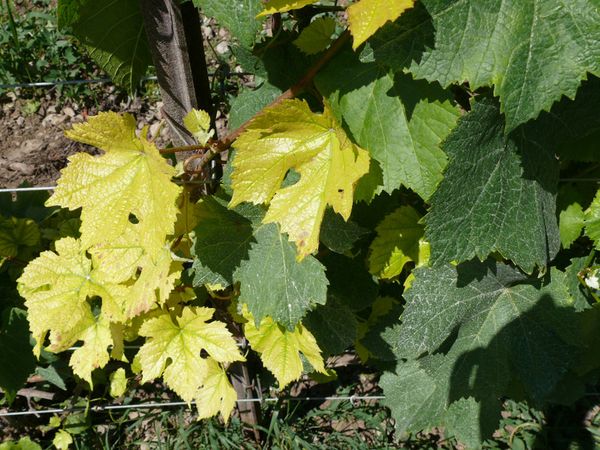
If the leaves of house grapes turn yellow, very often non-infectious chlorosis contributes to this. It is also a consequence of disorders of photosynthesis. Usually, the disease appears in that case, if the region of growth of the bush is not the most favorable climatic conditions.
However mistakes, carried out in the care of the vineyard, - the most common cause of non-infectious chlorosis. Remember: it is possible to prevent the development of this disease, if you do not plant vines in the ground with a high content of lime, on salt marshes or heavy soils.
Treatment
At the first symptoms it is necessary to begin treatment immediately. For example, the use of iron sulphate shows high efficiency. To do this, dilute in one liter of water 200-300 g of iron sulphate. It is not necessary to spray the bushes. Make small holes in the ground and fill it with nutrients. It is possible to process bushes in June-July and by means of fertilization. The main thing, that the feed mixture contains iron.
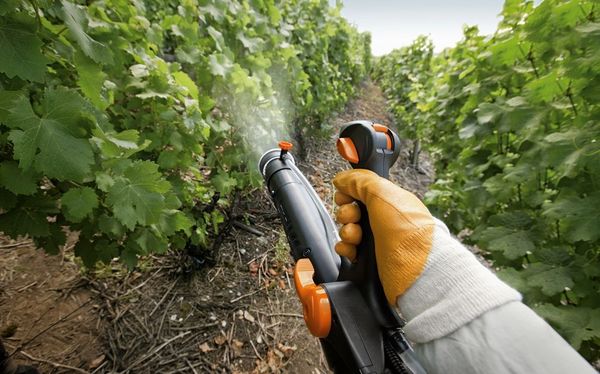
Prevention
First, what you should pay attention to, - the need for drainage and mulching of the soil. The substrate must be well permeable to air and moisture. In the process of feeding it is better to prefer physiologically acidic fertilizers. To reduce the likelihood of chlorosis, better buy varieties, characterized by good resistance to this disease.
Whatever you decide to do to treat the vines, start acting immediately after the first symptoms of the disease (example, noticeably brightened grape leaves). Only in this case you can count on a full result.
Video "Grape diseases and their treatment"
In this video you will learn about it, what can make grapes sick and how to treat it.

